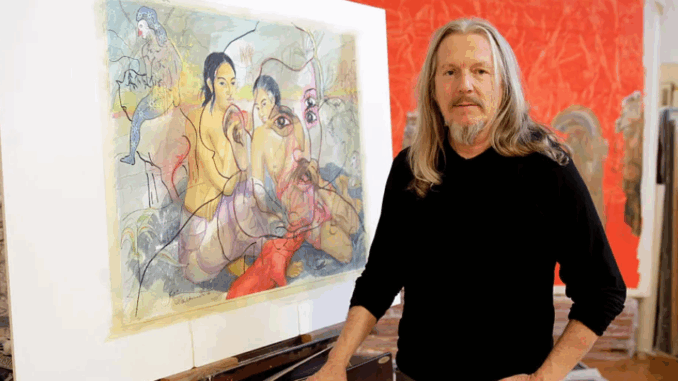
Mary Gilmore, Staff Writer
A string of high-profile forgery has rocked Japan’s art world, as multiple museums and galleries uncover fraudulent works linked to German art forger Wolfgang Beltracchi. Several paintings long believed to be masterpieces by early 20th-century European artists were identified as forgeries crafted by Beltracchi.
The first major revelation came from the Tokushima Modern Art Museum, which confirmed that its prized oil painting, “At the Cycle-Race Track,” was made by Beltracchi. This painting was thought to have been made by French Cubist Jean Metzinger and was bought in 1999 for 67.2 million yen.
Shortly after, the Museum of Art in Kochi announced that a painting it had believed to be by German expressionist Heinrich Campendock was also a Beltracchi creation. The museum’s internal investigation was prompted by inconsistencies in provenance and style.
In a November interview with The Asahi Shimbun, Beltracchi acknowledged that the paintings in the Kochi and Tokushima museums were his own after reviewing photographs of the two pieces. He explained that he produced the forgeries during his time living in Paris in the 1980s. He said that numerous works were sold to Japanese buyers by art dealers based in Paris and London.
Then, a gallery operated by the Yamada Bee Company Group in Okayama Prefecture revealed that another painting was found to be fraud. “Kiki de Montparnasse,” which was assumed to be by the Polish-French artist Moïse Kisling, was revealed to be another Beltracchi counterfeit. The forgery was flagged when a curator at a museum in Fukuyama questioned its authenticity.
The revelations regarding these paintings are not that surprising given Beltracchi’s history. Wolfgang Beltracchi served six years of prison time for his role in one of the largest art frauds in history, admitting to forging hundreds of artworks. This included faking artwork by artists such as Max Ernst, Fernand Léger, and Georges Braque. Beltracchi would create paintings in the style of renowned artists, often inventing works that didn’t exist. He then fabricated provenance documents and used aged materials to pass them off as authentic. He didn’t do this alone either; his wife Helene was sentenced to four years in prison for aiding in the conspiracy.
The recent Japanese revelations have caused stress in the art world due to the institutional and geographic spread of the forgery. Beltracchi’s reach appears to have infiltrated across to Japan, which is an entirely new continent for Beltracchi. His artworks that were caught prior to the Japanese works remained within Europe. Now, his spread has been found eastward, causing Japanese institutions to face reputational damage and financial loss.
The Tokushima Modern Art Museum is seeking a full refund for its purchase, while other Japanese institutions are frantically reassessing their collections for fraud. These revelations have caused a call for reauthentication, provenance verification, and stylistic review by independent scholars.
This begs the question that everyone across the world is asking: How many of Beltracchi’s pieces are still hanging, and could they be closer than we think?
Leave a Reply